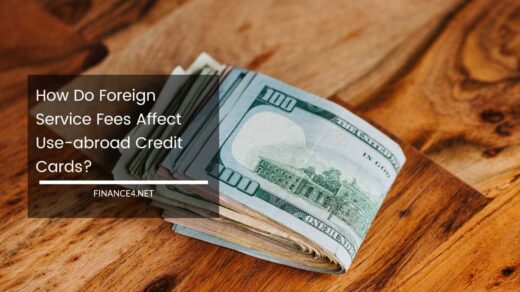What is the Benefit of Having a Fixed Interest Rate Loan?

Fixed Interest Rate Loan
The Benefits of a Fixed Interest Rate Loan: A Comprehensive Guide for US and European Borrowers
In today’s ever-changing financial landscape, understanding your loan options is crucial for making informed and strategic borrowing decisions.
Whether you’re buying a home, financing a car, or taking out a personal loan, one of the most important decisions you’ll need to make is whether to choose a fixed or variable interest rate.
The choice can significantly impact the total cost of borrowing, your financial planning, and your ability to manage debt. F
or many borrowers, a fixed interest rate loan can be an attractive option, offering stability and predictability in the face of an uncertain economic environment.
This article explores the key benefits of a fixed interest rate loan, particularly for borrowers in the United States and Europe.
We will dive into the advantages, provide a comparison with variable rate loans, and discuss factors to consider when selecting the best loan option for your personal financial situation.
What is a Fixed Interest Rate Loan?
A fixed interest rate loan is a loan in which the interest rate remains constant for the entire duration of the loan term.
This means that, regardless of fluctuations in the broader market interest rates, the rate you are charged will stay the same throughout the life of the loan.
Consequently, the amount of your monthly payment remains unchanged as well, providing a high level of certainty and control over your finances.
For example, if you take out a 30-year mortgage with a fixed interest rate of 4%, your monthly payment will remain the same for the entire 30 years, unless you refinance the loan or make significant changes to the terms.
This stability makes fixed-rate loans especially appealing for long-term financial commitments, such as home loans or car loans.
Key Advantages of a Fixed Interest Rate Loan
1. Predictability and Stability
One of the primary benefits of a fixed interest rate loan is the predictability it offers in terms of both monthly payments and overall costs. Here’s a deeper look at why this predictability is so beneficial:
- Budgeting Certainty: With a fixed-rate loan, you know exactly how much you need to pay each month, which makes it easier to budget and plan your finances. Whether you’re taking out a mortgage, car loan, or personal loan, having a fixed monthly payment ensures you can anticipate your expenses and allocate funds for other priorities. This level of financial predictability is especially crucial for borrowers who are managing multiple expenses and long-term financial goals.
- Reduced Financial Stress: The certainty of fixed-rate payments can help reduce stress and anxiety around managing debt. In contrast, variable-rate loans can cause anxiety for borrowers who are concerned about interest rate fluctuations leading to unexpected increases in monthly payments. The absence of such uncertainty with a fixed-rate loan allows borrowers to focus on building savings, investing, and other financial priorities without worrying about fluctuating loan costs.
- Long-Term Financial Planning: Long-term loans, such as mortgages, student loans, or large personal loans, can span many years. With a fixed interest rate, you have the stability to make long-term financial plans, such as saving for retirement or funding a child’s education, without being surprised by rising loan payments. This sense of stability can help you stay focused on your financial goals and reduce the likelihood of taking on excessive debt in the future.
2. Protection Against Rising Interest Rates
In times of economic uncertainty, interest rates are prone to rise. Whether due to inflation, central bank policy changes, or other macroeconomic factors, rising interest rates can lead to higher borrowing costs.
A fixed interest rate loan offers important protection against such increases:
- Safeguard Against Economic Shifts: The most significant advantage of a fixed-rate loan is its ability to shield borrowers from rising market interest rates. For instance, if the Federal Reserve in the US or the European Central Bank decides to increase interest rates, the cost of borrowing typically goes up across the economy. With a fixed-rate loan, however, you don’t have to worry about these increases affecting your payments. Even if the market rate rises significantly, your rate will remain the same, which means your loan costs won’t increase.
- Maintain Affordability: As interest rates rise, so do monthly loan payments for variable-rate loan holders. For example, if you have an adjustable-rate mortgage (ARM) and the interest rate increases, your monthly payment could rise substantially. With a fixed-rate loan, your payment stays the same, which means you can maintain control over your monthly budget, even during periods of economic volatility.
- Example of Market Protection: Suppose you take out a fixed-rate mortgage at 3.5% when market rates are at 4%. Over the next five years, if market interest rates rise to 6%, your fixed-rate loan will still charge you the original 3.5%, saving you money compared to someone who took out a variable-rate loan at the new 6% market rate.
3. Peace of Mind
A fixed-rate loan provides peace of mind in several key ways, helping you avoid common financial worries and focus on other aspects of your financial life:
- Reduced Financial Uncertainty: Having a fixed monthly payment eliminates the fear of unexpected changes in your loan repayment schedule. If you’re budgeting for your mortgage, car payment, or personal loan, the last thing you want is a surprise increase in the amount you owe each month. Fixed-rate loans provide a sense of security because borrowers know they will not face sudden increases in payments.
- Focus on Other Financial Goals: Because you have stable payments with a fixed-rate loan, you can confidently focus on saving for other financial goals, such as building an emergency fund, saving for retirement, or paying down high-interest credit card debt. The peace of mind provided by predictable payments can free up mental energy to work toward these other goals without constantly worrying about loan costs.
4. Easier to Compare Loan Products
When you opt for a fixed-rate loan, the terms are clearly defined from the outset, which makes comparing different loan products much easier.
- Transparent Costs: With a fixed rate, you can quickly determine the total cost of the loan by multiplying the monthly payment by the number of months in the loan term. This clarity makes it easier to compare fixed-rate loans from different lenders and make an informed decision about the best loan for your needs.
- Long-Term Predictability: Fixed-rate loans are more straightforward than variable-rate loans when it comes to predicting long-term costs. With a variable-rate loan, the total cost of borrowing can vary significantly depending on how rates change, making it harder to accurately estimate how much you’ll pay over the life of the loan.
Fixed Interest Rate vs. Variable Rate Loans
When deciding between a fixed and variable rate loan, it’s important to understand the pros and cons of each option. Here’s a detailed comparison:
| Feature | Fixed Interest Rate Loan | Variable Interest Rate Loan |
|---|---|---|
| Interest Rate | Remains constant for the duration of the loan term | Fluctuates based on market conditions |
| Monthly Payments | Consistent and predictable | May change depending on interest rate movements |
| Risk | Lower risk of increased payments | Higher risk if interest rates rise |
| Best Suited For | Borrowers who prioritize stability and predictability | Borrowers who are comfortable with some risk and may benefit from potential rate decreases |
| Potential for Savings | No potential for rate reductions over time | Potential savings if interest rates fall |
| Financial Planning | Easier to plan for long-term financial goals | Less certainty in long-term financial planning |
Key Differences:
- Interest Rate Movements: In a variable-rate loan, the interest rate can change periodically based on market conditions. If rates go up, your loan payments may increase, while a decrease in rates could lower your payments. In contrast, with a fixed-rate loan, your rate and payments remain steady.
- Risk Tolerance: Variable-rate loans can be attractive to borrowers who are willing to take on some level of risk for the potential of lower rates in the future. However, borrowers who prioritize stability and want to avoid any risk of rising payments may prefer the safety of a fixed-rate loan.
5. Flexibility with Fixed Interest Rate Loans
Fixed interest rate loans are often more flexible than variable-rate loans when it comes to refinancing or making changes to the loan terms.
- Refinancing Opportunities: Even though your loan has a fixed rate, you still have the option to refinance the loan if rates drop significantly. For example, if you initially took out a fixed-rate mortgage at 4% and market rates drop to 3%, you can refinance your loan at the lower rate, potentially saving you money over the long term.
- Predictability of Loan Term: While variable-rate loans can be unpredictable, a fixed-rate loan provides certainty about the loan’s term. You can plan for a set period of time, knowing when the loan will be paid off and how much you will pay each month. This is especially beneficial for people who are focused on long-term financial planning.
Factors to Consider When Choosing a Fixed Interest Rate Loan
When deciding whether a fixed interest rate loan is the right choice for you, several factors should be taken into account:
1. Loan Term Length
The length of the loan term plays a crucial role in determining whether a fixed or variable rate loan is best for you.
For long-term loans, such as 15 to 30-year mortgages, a fixed rate is generally more advantageous because it locks in a stable rate for a long period.
2. Current Economic Conditions
If interest rates are currently low, locking in a fixed rate can be an excellent way to take advantage of favorable market conditions.
On the other hand, if rates are expected to fall, a variable-rate loan might offer some initial savings, though this comes with the risk of future increases.
3. Personal Risk Tolerance
Consider your comfort level with risk. If you’re averse to the idea of fluctuating payments and prefer the security of knowing your monthly payments will remain constant, a fixed-rate loan is likely the better choice.
However, if you’re more comfortable with taking risks in the hope of future rate reductions, you may prefer a variable-rate loan.
4. Financial Goals
If you have long-term financial goals, such as buying a home, paying off student debt, or saving for retirement, a fixed-rate loan may offer the stability needed to achieve these goals.
With predictable payments and no risk of interest rate hikes, you can focus your attention on other financial milestones.
Final Thoughts
Fixed interest rate loans provide an array of compelling advantages for borrowers in both the United States and Europe who prioritize stability, predictability, and protection against rising borrowing costs.
The ability to lock in a constant rate and know exactly how much you will pay each month can help reduce financial stress, improve budgeting accuracy, and allow for long-term financial planning.
For those who value certainty and want to safeguard against the unpredictability of interest rates, fixed-rate loans can offer a great deal of peace of mind.
Whether you’re purchasing a home, financing a car, or taking out a personal loan, the fixed interest rate loan may be the right choice to ensure your financial security in an uncertain world.
Disclaimer: This article is intended for informational purposes only and does not constitute financial advice. Before making any borrowing decisions, it’s essential to evaluate your personal financial situation and consult with a qualified financial advisor.



